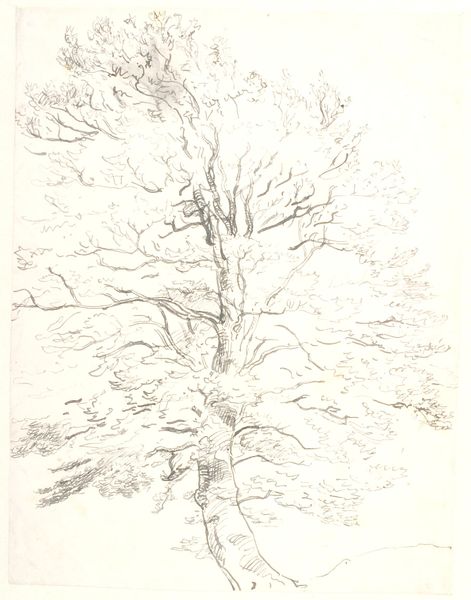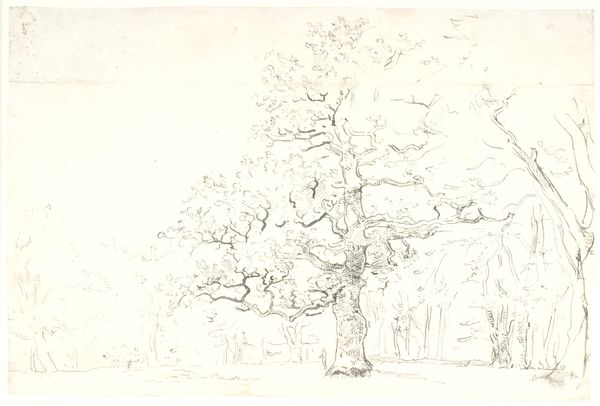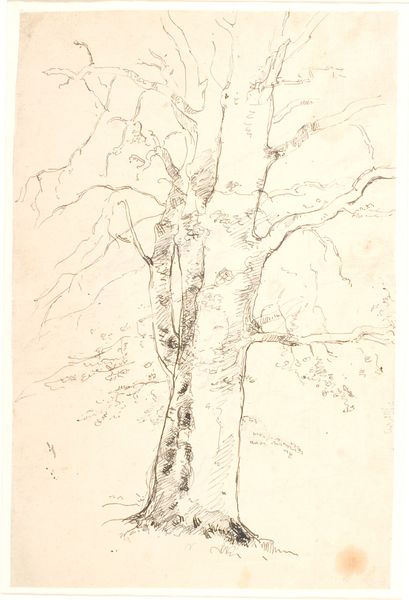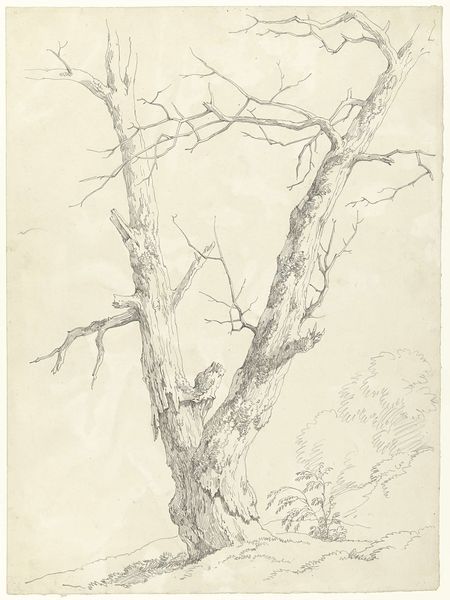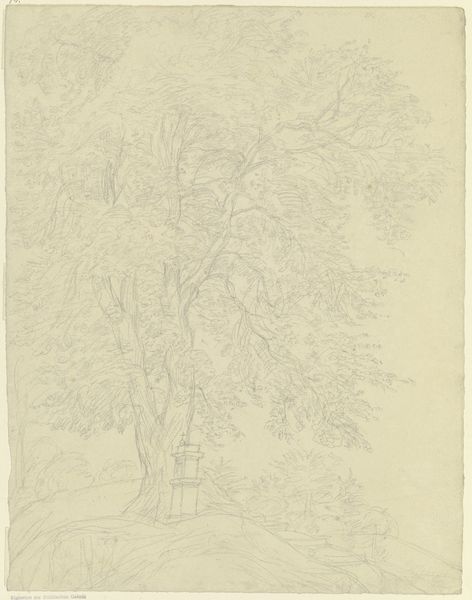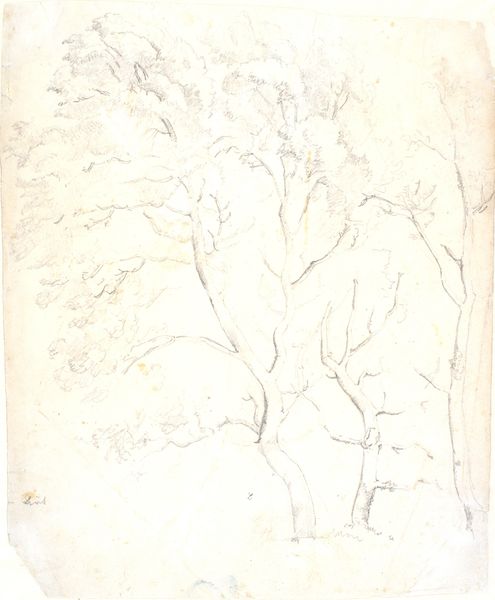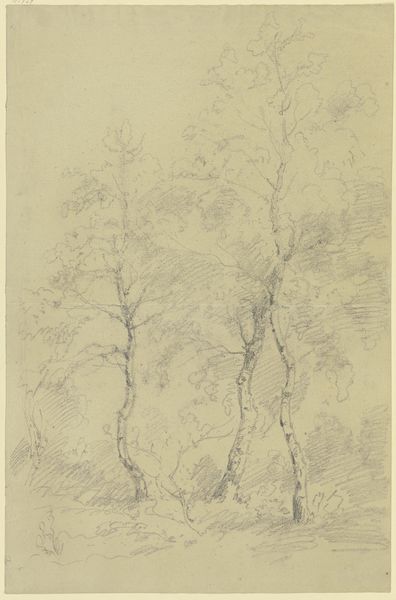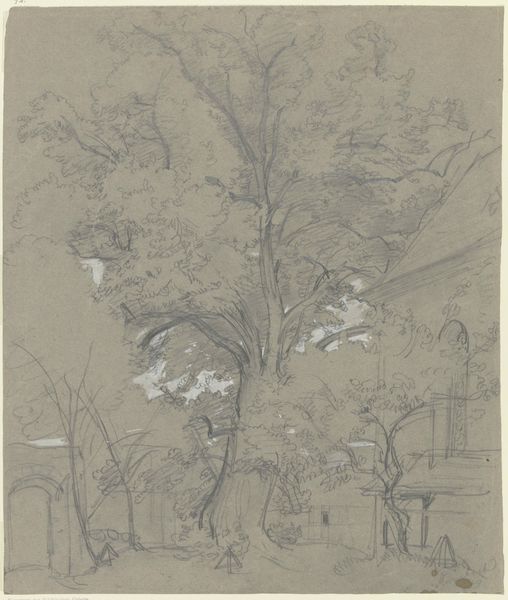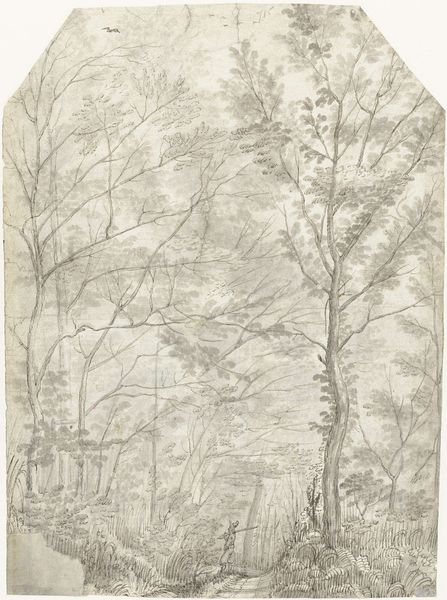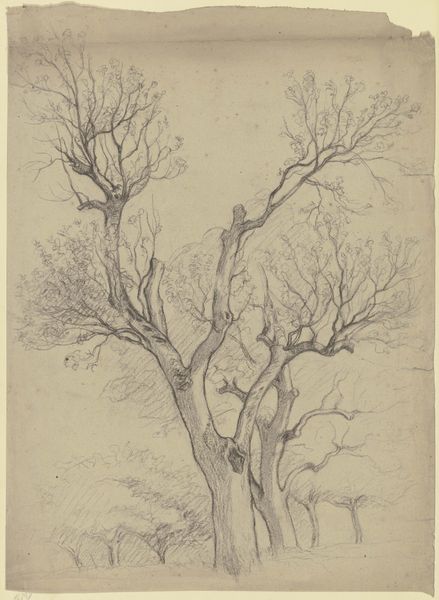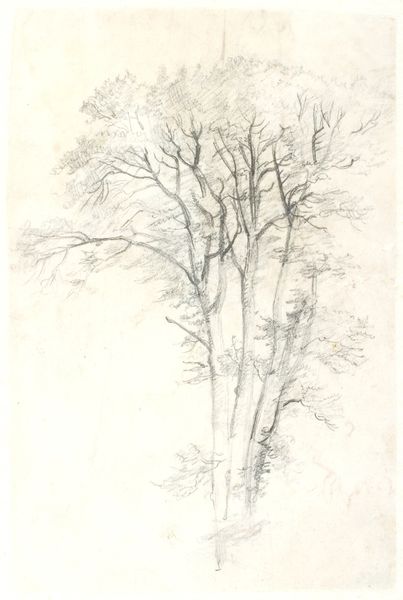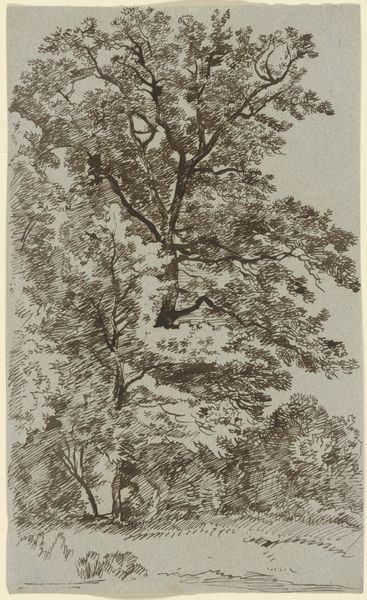
drawing, ink, pencil
#
drawing
#
landscape
#
form
#
ink
#
romanticism
#
pencil
#
line
#
naturalism
#
realism
Dimensions: 358 mm (height) x 206 mm (width) (bladmaal)
Editor: This is Dankvart Dreyer's "Study of Oak Trees," made with ink and pencil in 1843. It's striking how delicate the linework is, almost like a whisper of the forest. What do you see in this piece, beyond just trees? Curator: I see a document rooted in the burgeoning Danish national romantic movement, one which championed nature as a site of cultural and national identity. Consider that in 1843, Denmark was navigating complex political landscapes, solidifying its own national identity distinct from German influence. Editor: So, the trees aren’t just trees; they’re symbols? Curator: Precisely. They speak to a very specific cultural need. Can we consider Dreyer's identity in all this? His life began shortly before Denmark lost Norway to Sweden and occurred during growing national consciousness. Think about the relationship between artistic expression, political undertones and emerging national identity. Why oak trees, do you think? Editor: Maybe because they're strong and resilient, representing the spirit of the Danish people? Curator: Exactly! And notice the "Study" in the title; it isn't a formal, finished piece, but one focused on learning. What aspects of Danish identity was Dreyer also perhaps still trying to define or understand at this time, artistically and perhaps even personally? Editor: It’s fascinating how a simple drawing of trees can hold so much meaning, a quiet resistance captured in the landscape. Curator: It highlights the power of art to operate on multiple levels simultaneously. To reflect personal narratives that contribute to overarching discourses. Art provides a site for intersectionality.
Comments
No comments
Be the first to comment and join the conversation on the ultimate creative platform.
